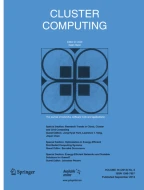Abstract
It is possible to quantify individual motion trajectories with the rapid development of sensor applications such as mobile positioning and wireless communication, and the characteristics like a large number, long time series and fine spatiotemporal granularity of GPS location data, bus IC data, and mobile phone data provide a hopeful premise for the study of human behavior. Based on a large amount of mobile information equipment, the effective mining of these data and the use of reasonable processing methods can make the processing results closer to reflect the actual human behavior patterns, and better serve the real traffic life. In this paper, by discussing the results of previous studies on human mobility, spatial interpolation method is used to discrete bus passenger flow obtained from big data of Beijing bus IC card into the continues area distribution, and we analyze the changed trend of passenger flow in Beijing of the whole day by utilizing the Spatial-temporal method. To a certain extent, the analysis of urban bus passenger distribution studied from Beijing bus IC data can understand the rules of human behavior and provide reliable data guidance for reasonable decision-making on Beijing passenger traffic planning, such like solving problem effectively that the number of bus passenger and the number of bus station does not match.













Similar content being viewed by others
Notes
5 am to 11 pm is the operating timeframe for most buses in Beijing.
References
Ratti, C., Williams, S., Frenchman, D., et al.: Mobile landscapes: using location data from cell phones for urban analysis. Environ. Plan. B 33(5), 727–748 (2006)
Li, W., Zhou, F., Zhu, W., et al.: Research on visualization of passenger flow data in rail transit network. China Railway 2, 94–98 (2015)
Ahas, R., Silm, S., Järv, O., et al.: Using mobile positioning data to model locations meaningful to users of mobile phones. J. Urban Technol. 17(1), 3–27 (2010)
Liu, L., Biderman, A., Ratti, C.: Urban mobility landscape: real time monitoring of urban mobility patterns. In: 11-th International Conference on Computers in Urban Planning and Urban Management, Hong Kong, 16–18 June 2009
Chai, Y.W., et al.: The research trend of time and space behavior and its practical application prospect. Adv. Geogr. 31(6), 667–675 (2012)
Sun, B.X., Wang, D.G.: Identifying activity type and trip purpose from data collected by passive GPS [C/CD]. In: Proceedings of the 2011 Annual Conference of AAG, Seattle, USA (2011)
Ta, N., Chai, Y.W.: Time geography and its inspiration to the people oriented community planning. Int. Urban Plan. 25(6), 36–39 (2010)
Shen, Y., Chai, Y.W.: Study on commuting flexibility of residents based on GPS data: a case study of suburban mega-communities in Beijing. Acta Geogr. Sin. 67(6), 733–744 (2012)
Papinski, D., Scott, D.M., Doherty, S.T.: Exploring the route choice decision-making process: a comparison of planned and observed routes obtained using person-based GPS. Transp. Res. F 12(4), 347–358 (2009)
Sagl, G., Resch, B., Hawelka, B., et al.: From social sensor data to collective human behavior patterns: analysing and visualising spatio-temporal dynamics in urban environments. In: Jekel, T., Car, A., Strobl, J. (eds.) GI-Forum 2012: Geovisualization, Society and Learning, pp. 54–63. Wichmann Verlag, Berlin (2012)
Shen, Y., Chai, Y.W.: Daily activity space of suburban mega-community residents in Beijing based on GPS data. Acta Geogr. Sin. 68(4), 506–516 (2013)
Pang, L.X., Chawla, S., Liu, W., et al.: On mining anomalous patterns in road traffic streams. In: Tang, J., King, I., Chen, L., et al. (eds.) Advanced Data Mining and Applications, pp. 237–251. Springer, Berlin (2011)
Sun, L., Lee, D.H., Erath, A., et al.: Using smart card data to extract passenger’s spatiotemporal density and train’s trajectory of MRT system. In: International workshop on urban computing, urbcomp 2012-held in conjunction with KDD 2012, Beijing, 12 Aug 2012
Qin, X., Zhen, F., Xiong, L.F., et al.: Research method of urban time and space behavior in big data. Adv. Geogr. 32(9), 1352–1361 (2013)
Liu, Y., Kang, C., Gao, S., et al.: Understanding intra-urban trip patterns from taxi trajectory data. J. Geogr. Syst. 14(4), 463–483 (2012a)
Long, Y., Zhang, Y., Cui, C.Y.: Identifying commuting pattern of Beijing using bus smart card data. Acta Geogr. Sin. 67(10), 1339–1352 (2012)
Song, C., Qu, Z., Blumm, N., et al.: Limits of predictability in human mobility. Science 327(5968), 1018–1021 (2010)
Liu, J., Yu, X., Xu, Z., et al.: A cloud-based taxi trace mining framework for smart city. Software. doi:10.1002/spe.2435 (2016)
Hong, Q., Sufang, Y., Wenyi, F.: Development of component geographic information systems applying in forest resources management. J. For. Res. 16(1), 47–51 (2005)
Acknowledgements
Our research is supported by Beijing Natural Science Foundation Project (8173053). The scientific research foundation of Beijing University of Civil Engineering and Architecture (00331616042). Smart Guangzhou Spatio-temporal Information Cloud Platform Construction (GZIT2016-A5-147).
Author information
Authors and Affiliations
Corresponding author
Rights and permissions
About this article
Cite this article
Zhang, J., Chen, Z., Liu, Y. et al. Space–time visualization analysis of bus passenger big data in Beijing. Cluster Comput 21, 813–825 (2018). https://doi.org/10.1007/s10586-017-0890-8
Received:
Revised:
Accepted:
Published:
Issue Date:
DOI: https://doi.org/10.1007/s10586-017-0890-8


